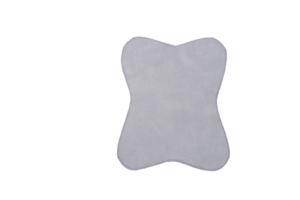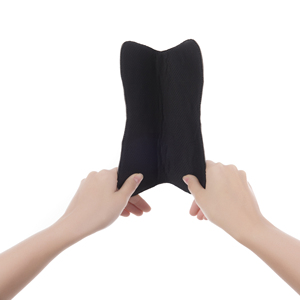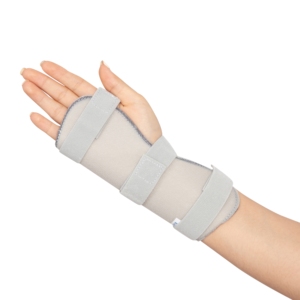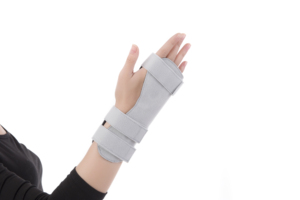
All categories
Featured selections
Trade Assurance
Buyer Central
Help Center
Get the app
Become a supplier

(22 products available)















































There are various types of metacarpal plates, which differ mainly in the materials from which they have been manufactured and the specific requirements of the surgical procedure they have been earmarked for. These include.
Titanium Metacarpal Plates
Titanium metacarpal plates are popular for their strength, low weight, and biocompatibility. Normally, these are used in situations where strength is needed to support fragile bones, as is found in the case of elderly patients or in patients who suffered from very low physical bone injuries. Titanium plates are very resistant to corrosion and, therefore, well-suited for long-term wear, particularly in patients with an active lifestyle.
Stainless Steel Metacarpal Plates
Stainless steel is another material commonly used in surgery and is, by default, the choice for making metacarpal plates. The plates made out of stainless steel are a little less expensive than titanium plates, a bit heavier, and very strong and durable. They are, however, more likely to corrode than titanium, but modern stainless steel plates are very well treated to withstand this. Treated stainless steel plates are, therefore, ideal in facilities where tight budgetary considerations prevent the purchasing of titanium plates.
Resorbable Metacarpal Plates
Resorbable plates consist of polylactic acid (PLA) or poly (L-lactic acid) and are used where a future, second surgery to remove the plate is insufficient. Commonly, these plates are used in pediatric surgery, where the patients are still very young, and the parents certainly do not want them to go through any more surgery if they can help it. These plates support the bones, and after some time, they gradually dissolve and are replaced by the natural bone tissues, eliminating the need for another surgical procedure.
Pre-contoured Metacarpal Plates
Pre-contoured metacarpal plates are characterized by having their shape already established so that they fit perfectly onto the hand bones. Such plates offer better stability and may be fixed in an extremely low fashion. These plates are generally made of titanium and are minimally invasive to install. As such, these are preferred for difficult fractures or for patients who need speedy recovery.
It may be important in any business to know both the specifications and the maintenance of the metacarpal plates especially for those in the orthopedic field to understand.
Key Specifications
As regards the key features, metacarpal plates are usually different in size, material, number of holes, and other characteristics. Plate length is usually around 30 to 100 millimeters, but this depends on the kind of bone fractures the patient has. Different plates have different hole patterns in relation to the number of holes; some may have as few as three holes, while others have more than ten. The hole diameter is variable, depending on the screw size used, but typically, the screw hole measures between 2.7 and 4.5 millimeters.
Titanium plates are often more flexible and stronger, but stainless steel plates are much more easily obtainable and are slightly heavier. Water-soluble plates are also different, and instead of metal, they are made of polymeric materials and dissolve on their own. These plates are often manufactured to conform to the metacarpal bones, and radiolucent plates allow for viewing through standard X-ray without interference with the frame.
Maintenance and Sterilization
Metacarpal plates are generally durable and require very little maintenance. However, sterilization and handling are very critical, particularly for the future surgical procedures of the patient. Metacarpal plates have to be autoclaved under high pressure and high temperature to be sure that all bacteria and viruses are removed from the plate.
It is important that only sterilizing equipment that has been certified for its usage is able to touch these plates. To keep stainless steel plates, for instance, it would be prudent not to expose them to moisture or to corrosive environments, although this is not much of a problem since stainless steel is by far more corrosion-resistant than ordinary steel.
Moreover, titanium plates are usually corrosion resistant, and most of the time, they do not need any special care. One more thing to note is that if an external fixation device connects to the metacarpal plate, that external fixation device, therefore, needs to be sterilized independently from the plate.
Hospitals and Clinics
Hospitals will require some activity in the form of an uninterrupted supply of metacarpal plates. What is mostly required by surgical wards would be multiple pre-contoured titanium and stainless steel plates in, as in, several sizes. These plates must be delivered to hospitals at a particular time, in a state of high sterility, and of good quality in order not to inconvenience them.
Orthopedic Specialist Centers
As already mentioned before, these centers focus on bone-related problems only and will, therefore, have need plates that handle complex fractures or joint injuries. It is also possible to build pre-contoured beveled products that possess an anatomical shape so that they could be applied here. Additionally, it is vital for these centers to have supplies that will not take a long time to fit in, based on the number of procedures that they perform.
Emergency Services and Ambulance
Ambulances and paramedics also use metacarpal plates where they stabilize fractures before transporting patients to health service providers. A flexible option, stainless steel plates, must be of the lightweight variety and easy to fit in. These services need to have suppliers that would ensure stocks are delivered relatively well and held in regional warehouses that will ensure the ambulances have supplies that are easy to access.
Medical Supply Distributors
Distributors sell metacarpal plates to various healthcare providers on their behalf. They need plates in volume so that hospitals there can buy them in bulk. In addition, distributors need to have both titanium and stainless steel plates, as well as resorbable plates, for they would need to have them available for all orthopedic procedures. When in business, wholesalers should offer competitive pricing, seasonal discounts, and favorable payment terms and conditions for revenue generation.
Material
The choice of material is a frequently important concern when selecting plates. Titanium that is light in weight has greater strength and would be more appropriate for patients who have fragile bones. Stainless steel is slightly heavier but, at the same time, very strong and, therefore, considerably cheaper. It would be better to use titanium for long-term fixation and stainless steel for short-term fixation.
Plate Contour and Size
The exact fit of the plate is much more important for the success of carpal bone surgery. Be aware that pre-contoured plates mimic the anatomical structure of the metacarpal bones for a snug fit, reducing the surgery's time. In this regard, the plate size must be compatible with the bone size and the type of fracture. This weighs out the need for many intraoperative size options for the physician to work with.
Workability
It is workability that very much determines how the surgical process will be carried out. Plates that are pre-contoured offer better stability for the bone and may be installed in a minimally invasive manner, which is less trauma for the patient. Also, look for plates with variable screws, as these will allow for different screw placements so a better fixation can be achieved.
Compatibility with Surgical Techniques
One more thing to consider in the process is the compatibility of the plates with the surgical techniques that are going to be applied. In this case, if the doctors prefer a minimally invasive approach using intramedullary screws or percutaneous fixation, make sure that the plate has all the required features incorporated. Moreover, using locked plates with other orthopedic devices can enhance stability.
Some frequently asked questions concerning the metacarpal plates and their answers.
Q1: What is a metacarpal plate used for?
A1: The metacarpal plate is used to treat fractures on the metacarpal bones of the human hand or foot. These plates give support to the fractured bone so that the bone may be in the correct position as it heals.
Q2: Which material is the metacarpal plate manufactured from?
A2: Metacarpal plates can, therefore, be produced from titanium or stainless steel and, therefore, have given strength and resistance to corrosion. There are also absorbable plates manufactured from polymers used, especially for pediatric cases.
Q3: How long do the metacarpal plates last inside the body?
A3: Metacarpal plates are not removed after surgery if they are made of titanium or stainless steel. Some patients also go on to live for many years with the plates inside their bodies.
Q4: Is an operation needed to remove a metacarpal plate made from absorbable material?
A4: No plate removal surgery is needed for metacarpal plates made from resorbable materials; the plates will dissolve after some time. This makes them very useful, especially for children who are always undergoing surgery.